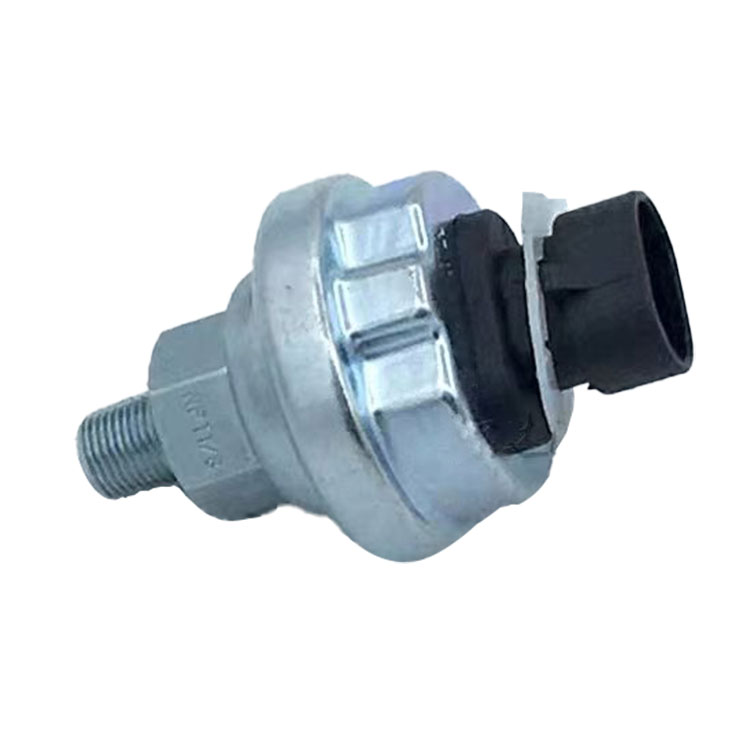Types of Automotive Sensors
2023-03-20
Types of Automotive Sensors
1. By purpose
Pressure-sensitive and force-sensitive sensors, position sensors, liquid level sensors, energy consumption sensors, speed sensors, acceleration sensors, radiation sensors, thermal sensors.
2. According to the principle
Vibration sensor, humidity sensor, magnetic sensor, gas sensor, vacuum sensor, biological sensor, etc.
3. Press the output signal
Analog sensor: Convert the measured non-electrical quantity into an analog electrical signal.
Digital sensor: Convert the measured non-electrical quantity into a digital output signal (including direct and indirect conversion).
Pseudo-digital sensor: Convert the measured signal quantity into a frequency signal or a short-period signal output (including direct or indirect conversion).
Switching sensor: When a measured signal reaches a certain threshold, the sensor outputs a set low or high level signal accordingly.

4. According to its manufacturing process
The integrated sensors are fabricated using standard process technologies for producing silicon-based semiconductor integrated circuits. Usually also part of the circuit used to initially process the signal to be measured is also integrated on the same chip. Thin film sensors are formed by depositing a thin film of the corresponding sensitive material on a dielectric substrate (substrate). When using a hybrid process, parts of the circuit can also be fabricated on this substrate. The thick film sensor is made by coating the slurry of the corresponding material on the ceramic substrate, the substrate is usually made of Al2O3, and then undergoes heat treatment to shape the thick film. Ceramic sensors are produced using the standard ceramic process or some variant of it (sol, gel, etc.). After appropriate preparatory operations, the shaped components are sintered at high temperature. There are many commonalities between the two processes, thick film and ceramic sensors, and in some respects the thick film process can be considered a variant of the ceramic process. Each process technology has its own advantages and disadvantages. Ceramic and thick film sensors are reasonable due to the low capital investment required for research, development and production, and the high stability of sensor parameters.
5. According to the measurement purpose
Physical sensors are made by using the characteristics that certain physical properties of the measured substance change significantly.
Chemical sensors are made of sensitive elements that can convert chemical quantities such as the composition and concentration of chemical substances into electrical quantities.
Biosensors are made using the characteristics of various organisms or biological substances to detect and identify chemical components in organisms.
6. According to its composition
Basic sensor: It is the most basic single conversion device.
Combined sensor: a sensor composed of a combination of different single conversion devices.
Applied sensor: It is a sensor composed of a basic sensor or a combined sensor combined with other mechanisms.
7. According to the form of action
According to the form of action, it can be divided into active and passive sensors.
1. By purpose
Pressure-sensitive and force-sensitive sensors, position sensors, liquid level sensors, energy consumption sensors, speed sensors, acceleration sensors, radiation sensors, thermal sensors.
2. According to the principle
Vibration sensor, humidity sensor, magnetic sensor, gas sensor, vacuum sensor, biological sensor, etc.
3. Press the output signal
Analog sensor: Convert the measured non-electrical quantity into an analog electrical signal.
Digital sensor: Convert the measured non-electrical quantity into a digital output signal (including direct and indirect conversion).
Pseudo-digital sensor: Convert the measured signal quantity into a frequency signal or a short-period signal output (including direct or indirect conversion).
Switching sensor: When a measured signal reaches a certain threshold, the sensor outputs a set low or high level signal accordingly.

4. According to its manufacturing process
The integrated sensors are fabricated using standard process technologies for producing silicon-based semiconductor integrated circuits. Usually also part of the circuit used to initially process the signal to be measured is also integrated on the same chip. Thin film sensors are formed by depositing a thin film of the corresponding sensitive material on a dielectric substrate (substrate). When using a hybrid process, parts of the circuit can also be fabricated on this substrate. The thick film sensor is made by coating the slurry of the corresponding material on the ceramic substrate, the substrate is usually made of Al2O3, and then undergoes heat treatment to shape the thick film. Ceramic sensors are produced using the standard ceramic process or some variant of it (sol, gel, etc.). After appropriate preparatory operations, the shaped components are sintered at high temperature. There are many commonalities between the two processes, thick film and ceramic sensors, and in some respects the thick film process can be considered a variant of the ceramic process. Each process technology has its own advantages and disadvantages. Ceramic and thick film sensors are reasonable due to the low capital investment required for research, development and production, and the high stability of sensor parameters.
5. According to the measurement purpose
Physical sensors are made by using the characteristics that certain physical properties of the measured substance change significantly.
Chemical sensors are made of sensitive elements that can convert chemical quantities such as the composition and concentration of chemical substances into electrical quantities.
Biosensors are made using the characteristics of various organisms or biological substances to detect and identify chemical components in organisms.
6. According to its composition
Basic sensor: It is the most basic single conversion device.
Combined sensor: a sensor composed of a combination of different single conversion devices.
Applied sensor: It is a sensor composed of a basic sensor or a combined sensor combined with other mechanisms.
7. According to the form of action
According to the form of action, it can be divided into active and passive sensors.
Previous:Introduction of Automotive Sensors



